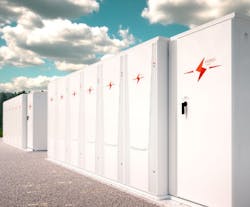Real estate development-focused energy storage firm Available Power LLC has closed a deal to deliver a utility-scale battery system to provide energy resiliency at the new Greenport International Airport and Technology Center project in Texas.
The 100-MW/200-MWh battery energy storage system (BESS) will support the privately run Greenport facility near Austin. The ownership of Greenport is targeting net-zero emissions goals for the site, including baseload power fueled by biomass.
Austin-based Available Power will lease land on the Greenport campus to develop the lithium-ion, front of the meter BESS. Once operational, the batteries can provide both grid stability services to the ERCOT system and support for the local utility.
Available Power plans to break ground on the Greenport BESS next year and put it into commercial operations by mid-2024. The prospective project has been placed for consideration in the Electric Reliability Council of Texas (ERCOT) interconnection queue.
“The Texas power grid is getting greener, and our goal is to ensure that it also becomes more resilient as it evolves,” said Benjamin Gregory, President of Available Power. “Large-scale energy storage is a critical component necessary to efficiently balance the grid, navigate severe weather safely, and adapt to changing consumer electricity demands. We hope our GREENPORT project will be a prime example of the power of battery energy storage in action.”
Related stories
Record Heat putting strain on Texas Grid Resiliency regardless of resource
Texas Utility regulators considering new Distribution Interconnection Standards for Energy Storage
Jupiter Power brings 200-MWh Crossett BESS into operation in stressed Texas Grid
The role of Texas as the nation’s top wind power capacity state and rising in solar energy installation make it ideal for utility-scale energy storage to help balance out the intermittencies of the renewable energies.
Earlier this year, Vistra Energy brought its DeCordova Energy Storage System online near Dallas. The 260-MWh DeCordova BESS is considered the largest such array in Texas.
Greenport International is being developed as a new airport and technology center located along the Texas-Colorado River some 17 miles from Austin’s Central Business District. The project’s planners also intend, as part of the net-zero vision, to develop a biomass-fueled combined heat and power (CHP) for the site.
The Technology Center will include space for future data centers and other new companies, according to the plan.
-- -- --
(Rod Walton, senior editor for EnergyTech, is a 14-year veteran of covering the energy industry both as a newspaper and trade journalist. He can be reached at [email protected]).
Follow us on Twitter @EnergyTechNews_ and @rodwaltonelp and on LinkedIn





